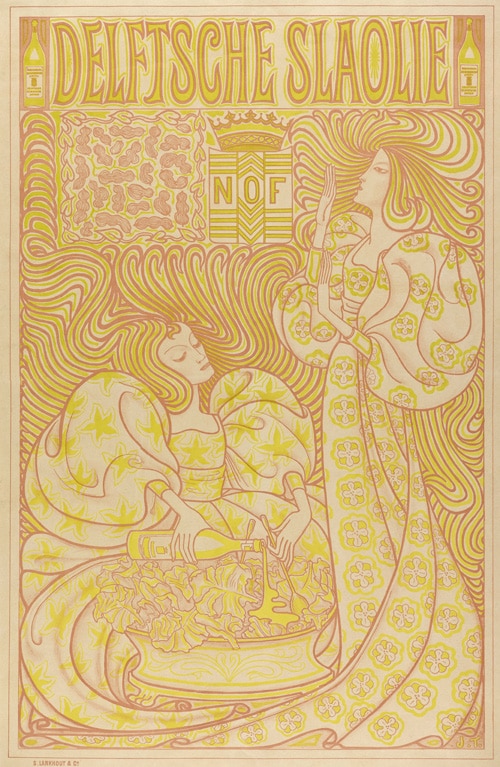De Jugendstil-krullen van het beroemde ‘slaolie-affiche’ sieren het beeldmerk van de grote Toorop-tentoonstelling in het Gemeentemuseum Den Haag. En hoewel die keuze herkenbaar en aansprekend is, is er toch wel wat op af te dingen. Het museum wil namelijk juist zo graag andere kanten van Toorop laten zien. En die zijn er verrassend veel.
Het Gemeentemuseum heeft een geschiedenis met Jan Toorop (1858-1928). In de jaren zestig, zeventig én tachtig organiseerde toenmalig directeur en Tooropkenner Victorine Hefting drie exposities die vooral focusten op zijn vroegere werk, tot en met het symbolisme. Dat is wellicht te begrijpen uit het feit dat Toorop in laatstgenoemde periode in Den Haag woonde en werkte. Ditmaal echter hebben conservator Hans Jansen en gastconservator Gerard van Wezel het complete werk willen belichten. Ook de latere ‘Amsterdamse periode’, toen Toorop zich tot het katholicisme had bekeerd.
Kunsthandel Oldenzeel nagebouwd
Toorop was een zeer veelzijdig man. We zien schilderijen, tekeningen, affiches, boekbanden, tegeltableaus. Er zijn sociaal bewogen voorstellingen, landschappen, allegorieën, mooie vrouwen, visserstaferelen en religieuze devotie. We zien vroege schilderijen met veel bruin, kleurrijk impressionisme, pointillisme, symbolisme, art nouveau, hoekige lijntekeningen en een later, katholiek symbolisme met strengere lijnvoering.
Het Gemeentemuseum neemt de bezoeker mee langs al deze perioden, elk in een zaal met muren in een eigen kleur. De bekendste periode, het symbolisme, hangt in de grote middenzaal met De Sphinx (1892/1897) als topstuk. Daar is ook een reconstructie te vinden van Toorops gevelontwerp voor kunsthandel Oldenzeel, waar de kunstenaar in 1891 zijn eerste solotentoonstelling had.
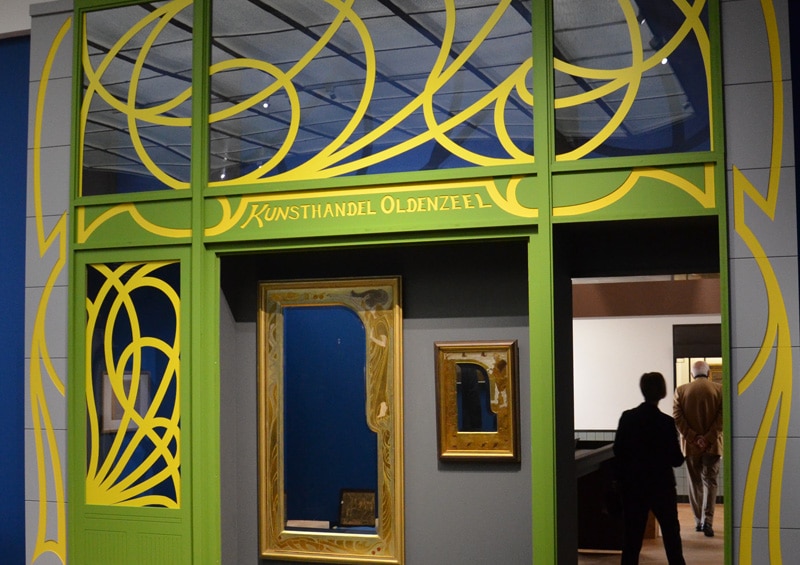
‘Deugt niet’
Toorops oeuvre is een nachtmerrie voor wetenschappers. Niet alleen vernieuwde hij zichzelf keer op keer, hij keerde ook in latere perioden terug naar eerdere stijlen of veranderde iets aan ouder werk. Een doorgekraste tekening op karton, voorzien van de tekst ‘deugt niet’, spreekt boekdelen.
In de catalogus Jan Toorop. Zang der Tijden (met wederom de slaolie op het omslag!) poogt Gerard van Wezel er toch lijn in te brengen. Dat doet hij aan de hand van chronologie, stijl en thematiek. Het is nauwelijks te bevatten dat dit pas het eerste boek is van een driedelige oeuvrecatalogus.
Kinderboek
Erg fraai is ook het kinderkunstboek van Kitty Crowther, Jan Toorop. Het lied van de tijd. Met weinig tekst maar veel beeld verkent zij Toorops inspiratiebronnen in Nederlands-Indië en Zeeland. In het bijbehorende kindertentoonstellinkje komt dat aan de hand van schetsen en foto’s nog meer tot leven.
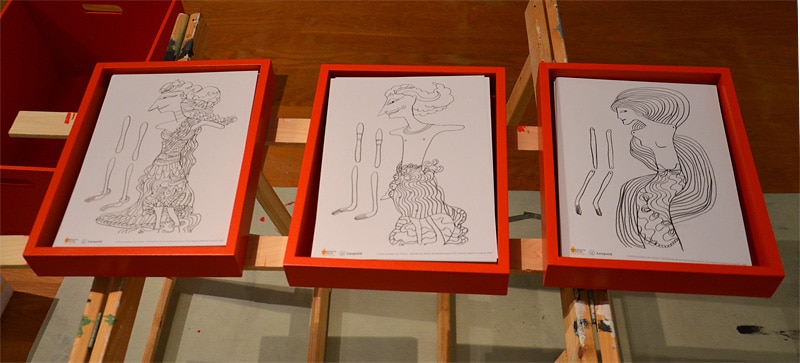
Klimt en Berlage
Toorop was zijn tijd vaak vooruit. Zo blijken de Klimt-achtige vrouwen met golvende lichamen en haren aanzienlijk vroeger gemaakt dan Klimts eigen Beethovenfries in Wenen.
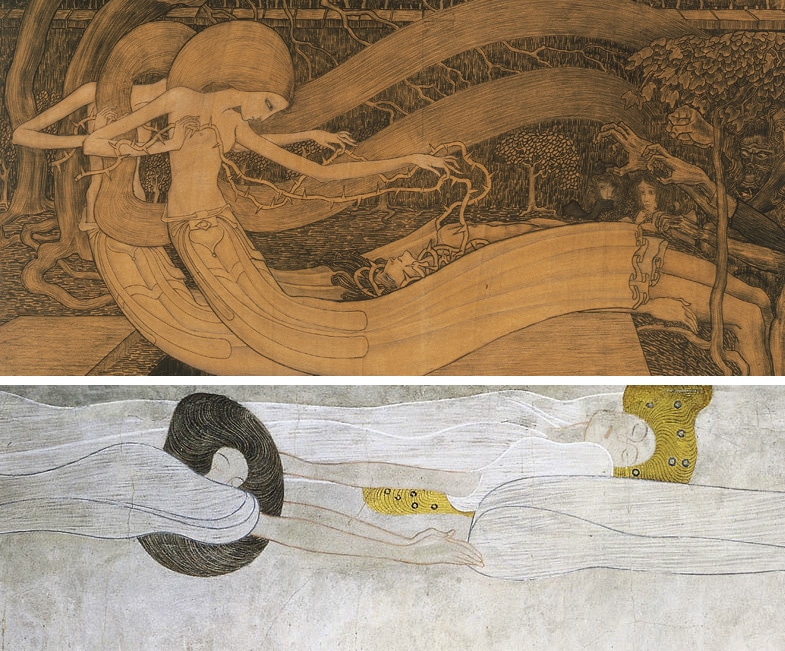
De grotere nadruk op de katholieke periode levert mooie verrassingen op. Toorop verstrakte in die latere jaren zijn stijl onder invloed van architect Berlage, met wie hij samenwerkte aan de Beurs in Amsterdam. Het is dan ook geen wonder dat in dit door Berlage ontworpen museum juist die katholieke periode fantastisch tot zijn recht komt. Een van de hoogtepunten vormen enkele van de kruiswegstaties van de St. Bernulphuskerk in Oosterbeek.
De chronologische opbouw wordt losgelaten als de tentoonstelling afsluit met portretten en zelfportretten door alle perioden heen. Dat Toorop een zeer begenadigd portrettist was, staat buiten kijf; museum Het Valkhof wijdde hier in 2003 zelfs een aparte expositie aan. Waarom juist dit aspect van zijn kunstenaarschap uit de chronologie is losgetrokken, wordt echter niet helemaal duidelijk.
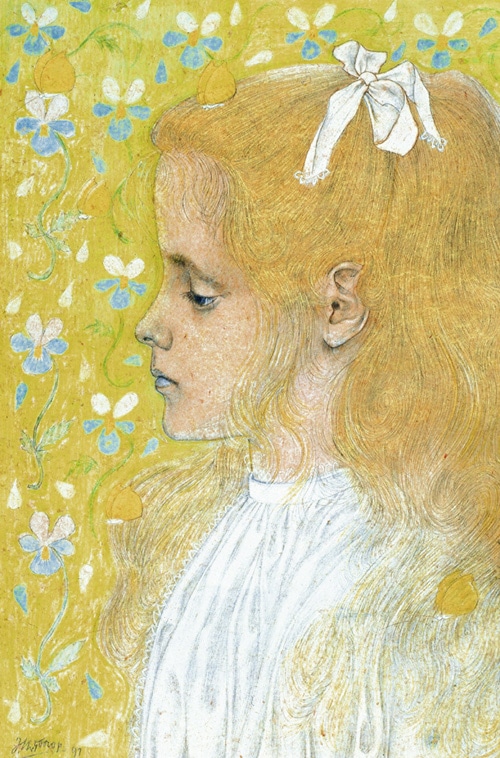
Het doet niet af aan de monumentale tentoonstelling. De bezoeker komt enigszins beduusd naar buiten, ongetwijfeld met een persoonlijk favoriete periode in het hoofd. En wie weet is dat toch gewoon weer die slaoliestijl.
Jan Toorop. Gemeentemuseum Den Haag, 26 februari tot en met 29 mei.
Tot en met 29 juni zijn daar ook Portrait of Edith and Judith I te zien op een bijzondere tentoonstelling met werk van Klimt en Schiele.
